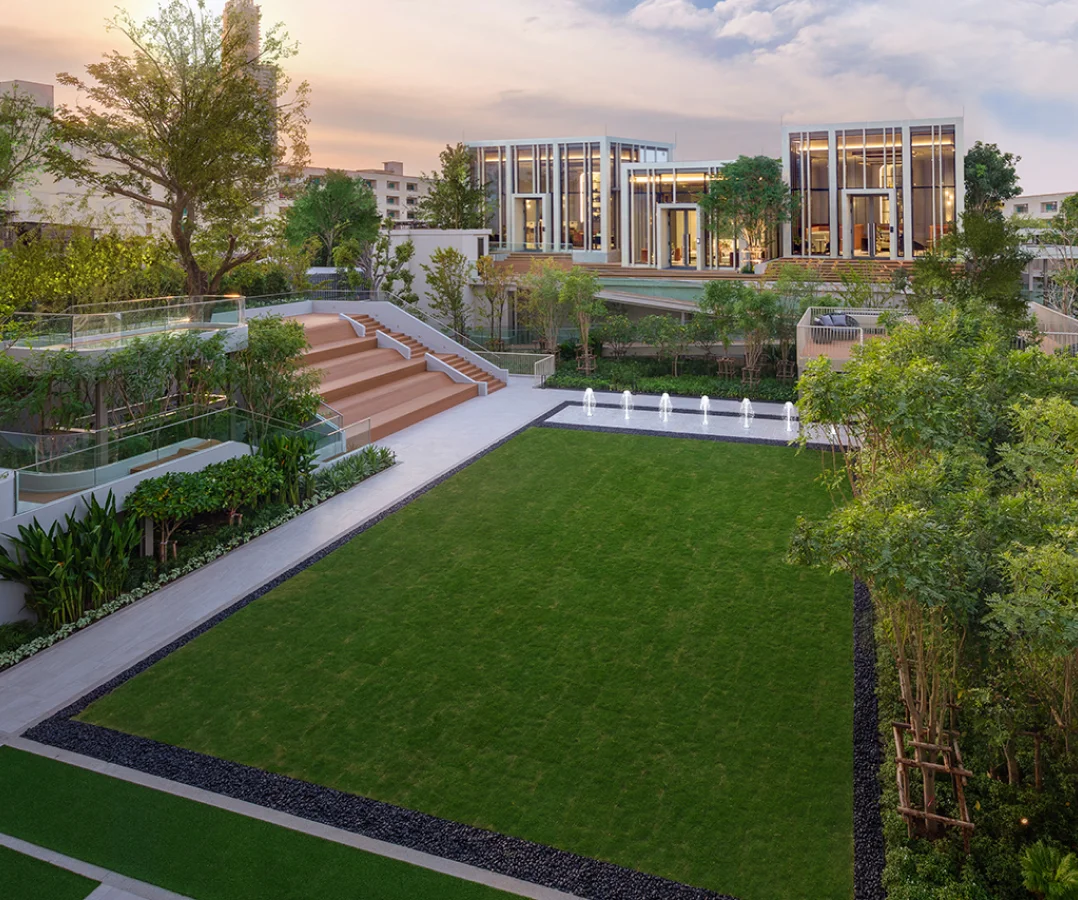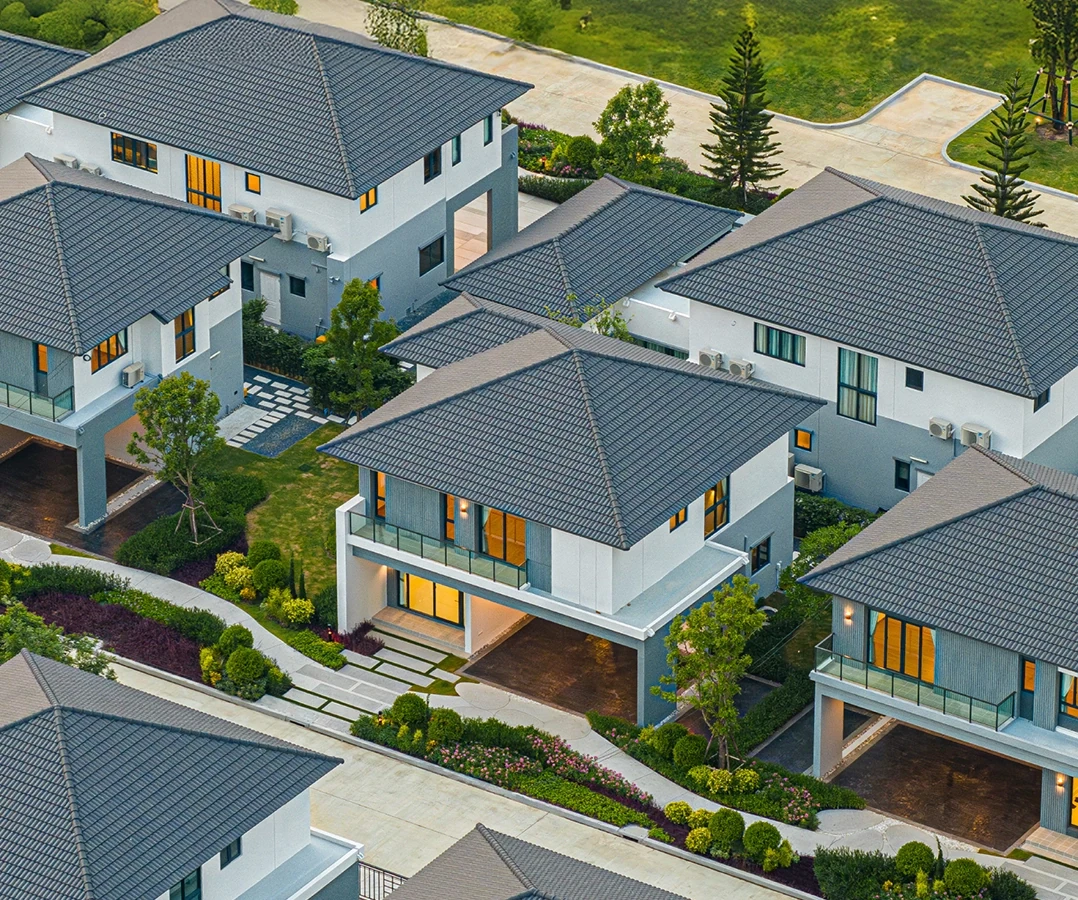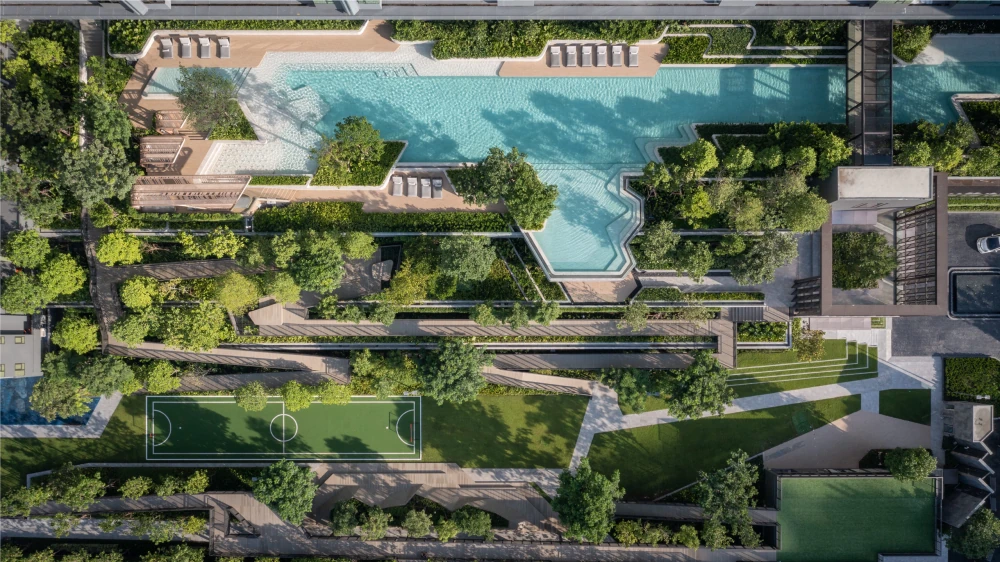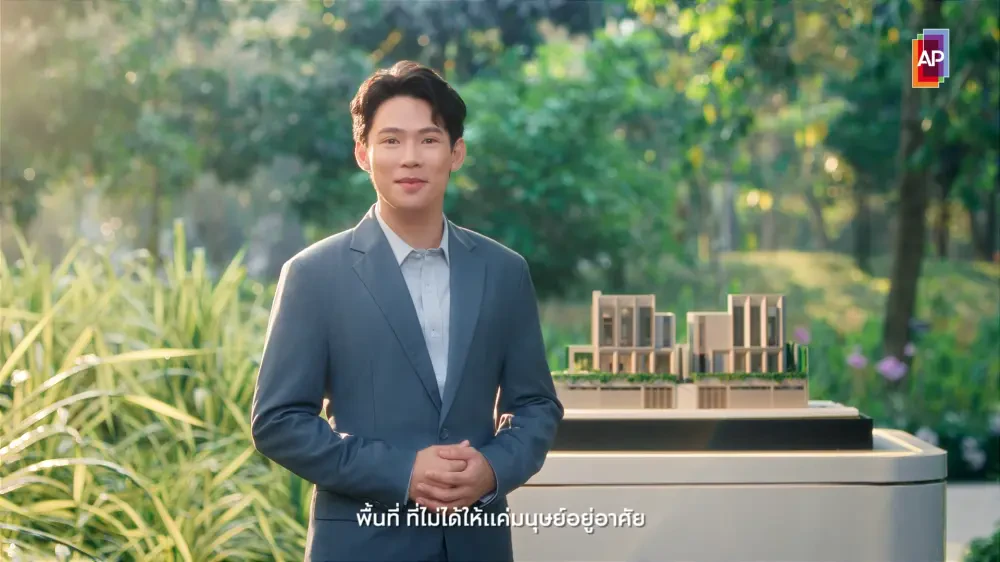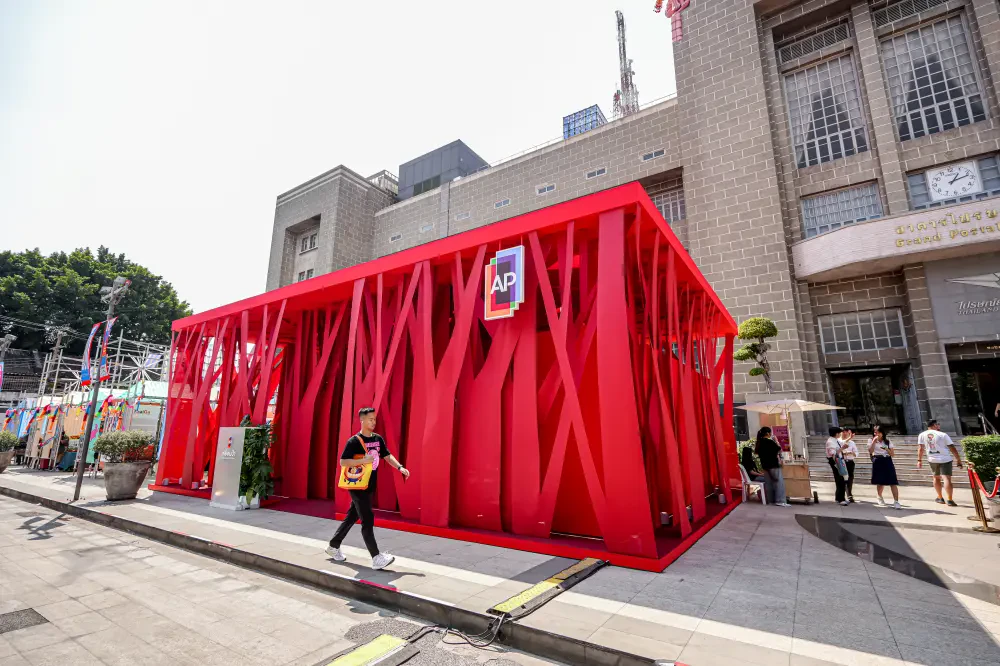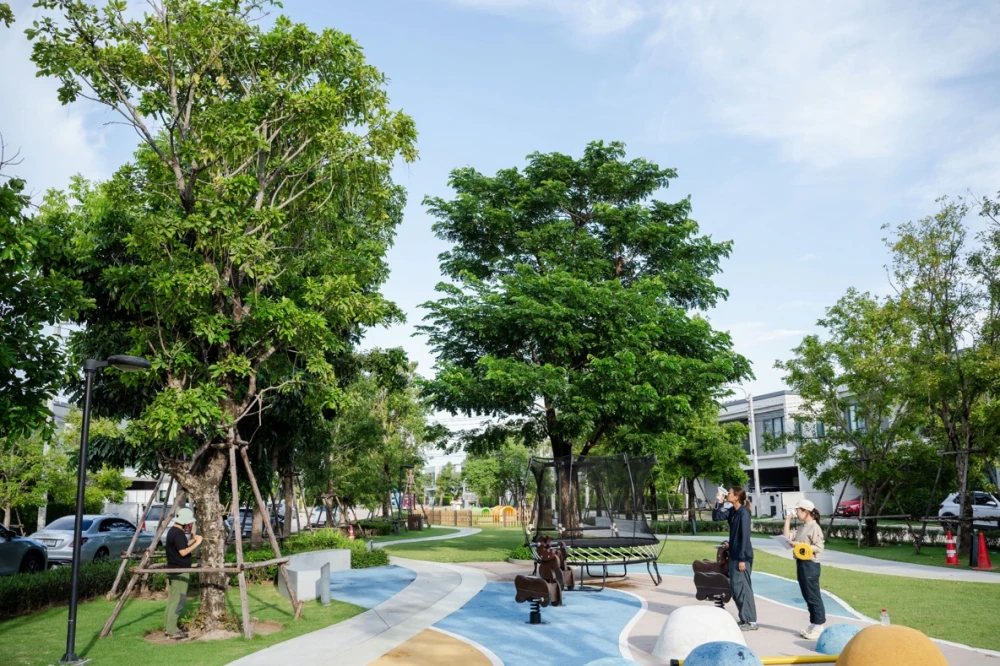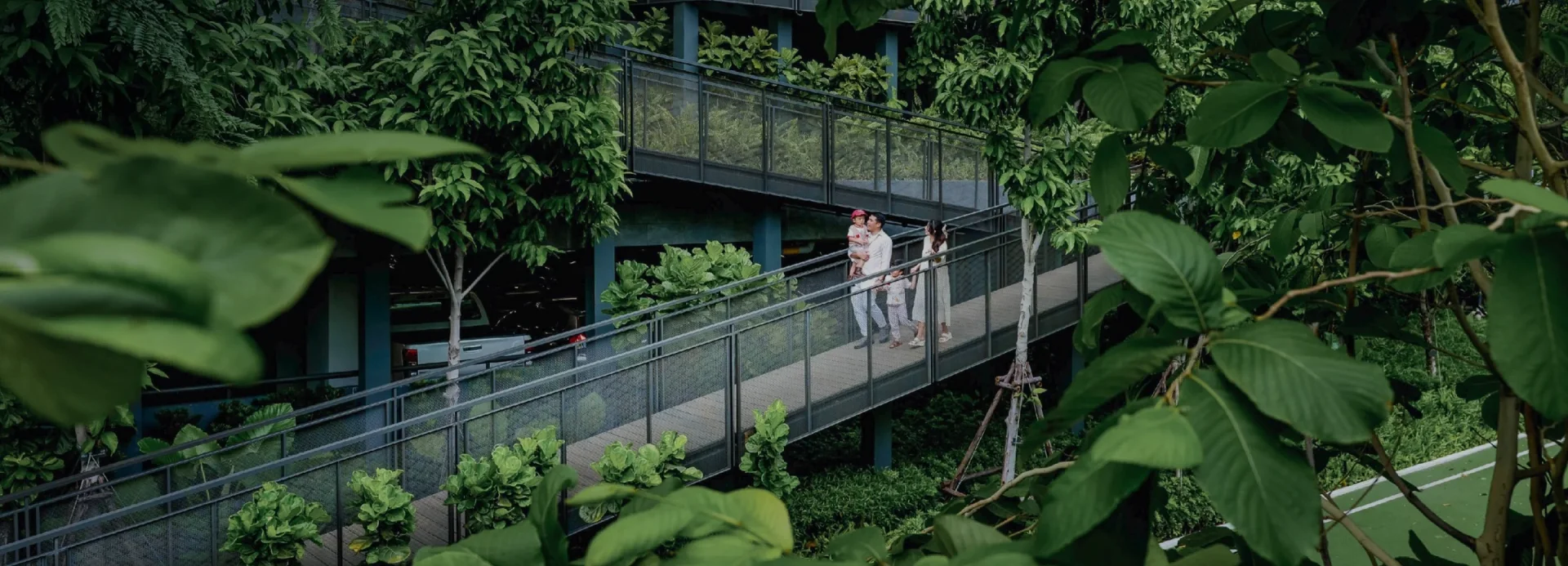
Biodiversity Management
Goals
Performance Highlights
Our Commitment
AP Thailand places great importance on biodiversity conservation and restoration alongside sustainable real estate development. The company recognizes that balanced ecosystems and diverse flora and fauna in urban areas are crucial factors for the quality of life of residents and surrounding communities. Therefore, the company is committed to implementing measures that help reduce impacts on ecosystems and promote the restoration of natural areas.
By integrating biodiversity conservation approaches into the project development process from the outset, AP Thailand adheres to biodiversity policies that comply with international laws and standards to create a balance between project development and environmental conservation. The company implements best practices, such as designing projects to align with the area’s existing ecosystems, maintaining and increasing green spaces within real estate projects, and restoring habitats for local flora and fauna. The company focuses on ensuring that every real estate project becomes a space conducive to human habitation and other living beings to minimize environmental impact as much as possible.
Supporting the SDGs Goals
Stakeholders Directly Impacted
Challenges and Opportunities
Urban real estate development faces challenges in maintaining biodiversity due to declining green spaces, ecosystem destruction, and intensifying Urban Heat Island Effects. Meanwhile, increasingly stringent environmental regulations require the real estate sector to adapt to sustainability standards. However, the trends toward Green Cities and Ecological Economy also create opportunities for real estate companies to differentiate themselves through developing projects with green spaces, native plants, and designs that promote urban ecosystems. In addition, consumers and investors are showing greater interest in environmentally friendly projects.
This presents an opportunity for AP Thailand to systematically integrate biodiversity management into the company’s operation, not only to reduce negative impacts but also to enhance organizational adaptive capacity, build resilience, and create shared value for all stakeholders in the long term. Biodiversity management is therefore not merely an environmental responsibility, but a key strategy for truly driving business toward sustainability.
Management Approach and Value Creation
AP Thailand recognizes the importance of biodiversity as the foundation of balanced and sustainable ecosystems. Real estate development in urban areas may cause land use changes. Therefore, the company is committed to implementing projects that consider biodiversity by reducing negative impacts and enhancing urban ecosystems through environmentally friendly approaches.
AP Thailand has adopted Nature-based Solutions in project development by increasing green spaces and designing projects to support local ecosystems, enabling residents to coexist with nature sustainably. Additionally, the company conducts biodiversity impact surveys and assessments before project development to prevent impacts on conservation areas and surrounding ecosystems.
Careful Selection of Project Development Areas
AP Thailand is committed to operating business while maintaining ecological balance and biodiversity by placing utmost care on selecting areas for project development that do not impact the environment and surrounding communities. The company has clear guidelines for avoiding ecologically sensitive areas such as conservation zones, mangrove areas, or important water sources, and operates only in areas that are legally permitted.
In 2024, AP Thailand conducted thorough assessments of project area suitability by evaluating physical, environmental, and relevant regulatory data in detail. This was done in tandem with prioritizing community context and natural resources in the area, such as soil conditions, water systems, and surrounding land use, to prevent long-term environmental risks.
Additionally, the company promotes project designs that align with nature by requiring at least 5% of the total project area to be green space in all projects to support urban biodiversity and provide areas conducive to the growth of local plants and small wildlife.

Biodiversity Risk and Opportunity Assessment
The Company recognizes the importance of biodiversity risk management and has continuously developed and reviewed related policies, frameworks, tools, and processes to accommodate potential impacts on business operations and appropriately adapt to changing circumstances. Additionally, real estate development business operations may cause impacts on biodiversity, such as the reduction of green spaces or changes in land use that affect urban ecosystems. To mitigate such impacts, the company has initiated environmental projects, such as the "Habitat Network Project" and biodiversity assessments in the Life Sathorn Sierra project and Centro Bangna project, which aim to promote coexistence between humans and nature and restore various species back to urban communities.
| Aspects | Issues | Descriptions |
|---|---|---|
| Risks | Natural Resource Dependency | Risks from both direct utilization, such as green spaces within projects, and indirect utilization, such as value chains linked to ecosystems. |
| Ecosystem Degradation | Impacts from natural habitat loss and land use changes affecting urban ecosystems. | |
| Risk Across Various Timeframes | - Short-term: Design green spaces to respond to current environmental conditions. - Medium-term: Establish biodiversity monitoring systems (3–5 years). - Long-term: Prepare for climate change impacts (5–10 years). |
|
| Organizational Sustainability Risk | Improper biodiversity management may compromise organizational security from an ecosystem perspective | |
| Opportunities | Ecological Development | Design urban areas to be ecosystem-friendly and support coexistence with nature. |
| Well-being Promotion | Quality green spaces enhance the physical and mental health of residents. | |
| Adaptive Capacity Enhancement | Utilize biodiversity to enhance resilience to climate change. | |
| Long-term Value Creation | Create economic, social, and environmental value through various projects, such as “Habitat Network” and Biodiversity Action Plan. | |
| Organizational Approach Development | Formulate a Biodiversity Action Plan (BAP) to serve as a mechanism for risk reduction and sustainable growth promotion. |
These approaches are aligned with the policy framework of the Office of Natural Resources and Environmental Policy and Planning (ONEP) and the Convention on Biological Diversity (CBD).
Based on past operations, the company recognizes that biodiversity is a crucial foundation for ecosystem security in terms of both resistance and resilience to environmental changes and potential future disasters. Therefore, the company has proceeded to develop a Biodiversity Action Plan (BAP) appropriate to the organizational context to serve as a mechanism for reducing risks, enhancing adaptive capacity, and promoting sustainable business operations in the long term.
AP Thailand uses Environmental Due Diligence processes and data from government agencies or sensitive area maps as tools to assess risks before deciding to develop projects in any particular area. This helps reduce risks in terms of legal compliance, community conflicts, and long-term sustainability.
At the same time, AP Thailand sees opportunities from biodiversity conservation and restoration, particularly in the context of nature-friendly urban design. The company has adopted Urban Biodiversity concepts through the following approaches:
- Selecting local plants that help maintain ecological balance
- Designing green spaces in projects to be no less than 5%
- Supporting natural carbon sinks to mitigate Urban Heat Island effects
- Increasing animal habitats through green space design
